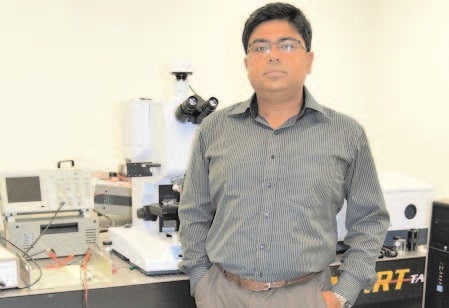The new material, presented above, has been made by a group from the University of Central Florida drove by Professor Debashis Chandra. Ordinary showcases like LCDs and LEDs utilize a type of light source and after that different channels to make the right shading of light at every last point over their surface. Be that as it may, the new material gets from the universe of chameleons and squid, making a surface that rather mirrors the right shades of light to make a picture evacuating the requirement for a light source and thus most of the mass, as well.
A meager fluid gem layer is sandwiched more than a metallic nanostructure molded like an infinitesimal egg container that ingests some light wavelengths and reflects others. The hues reflected can be controlled by the voltage connected to the fluid crystal layer. The collaboration between fluid gem particles and plasmon waves on the nanostructured metallic surface assumed the key part in creating the polarization-free, full-shading tunable display. The work, distributed in Nature Communications, has created a show that is a couple of microns thick, yet has far bigger shading palette than comparative endeavors which have gone before it. Contrasted with other screen advances, which can be millimeters thick, this is smooth, sufficiently adaptable to apply to plastics or engineered fabrics to make a screen that could be folded, collapsed, or even worn.
“Your cover, your garments, your design things – the majority of that could change,” clarified Chanda in a press conference. Why might a person require 50 shirts in my storage room on the off chance that he could change the shading and patterns? Indeed, the uses of such a material are essentially boundless. In any case, presently, research paper is one thing; it being utilized as a part of practice is very another. We’ll need to sit back and watch if Chandra’s material has what it takes.
